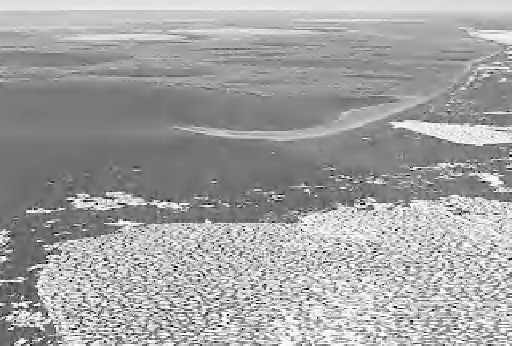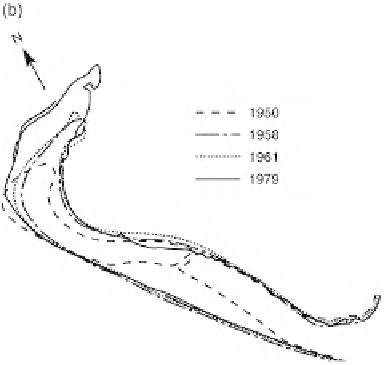Geology Reference
In-Depth Information
(a)
Figure 10.12.
Sequential development of the spit at Sachs Harbour, southwest Banks Island, NWT,
Canada, 1950-1979. (a) Oblique air view of the spit in July 1972. Note the pack ice offshore.
(b) Change inferred from air photo coverage, 1950, 1958, 1961, and ground survey, 1979. From
Clark et al. (1984), Harry et al. (1983).
10.4.3. Ice on the Beach
The ice foot plays an important role in limiting beach reworking. Ice forms in the inter-
tidal zone during autumn when swash or spray from breaking waves freezes on contact
with the beach. Once a layer of ice has formed, wave-induced movement of beach material
ceases. Likewise, in spring, ice may remain frozen to the beach long after the sea ice breaks
up and prevents the direct action of waves for several weeks. Multi-year fast ice may also
develop (Reimnitz et al., 1995). The development and persistence of beach-fast ice is
helped if permafrost is present in the inter-tidal sediments (Allard et al., 1992; Dyke, 1991;
Dyke and Wolfe, 1993; Hansell et al., 1983). The presence of beach-fast ice also means
that conventional freeze-up and break-up dates do not necessarily apply to the Arctic
beach zone.
The size and extent of the ice foot varies from year to year depending primarily upon
the sea conditions the previous autumn; moderate to strong wave action is an optimum


